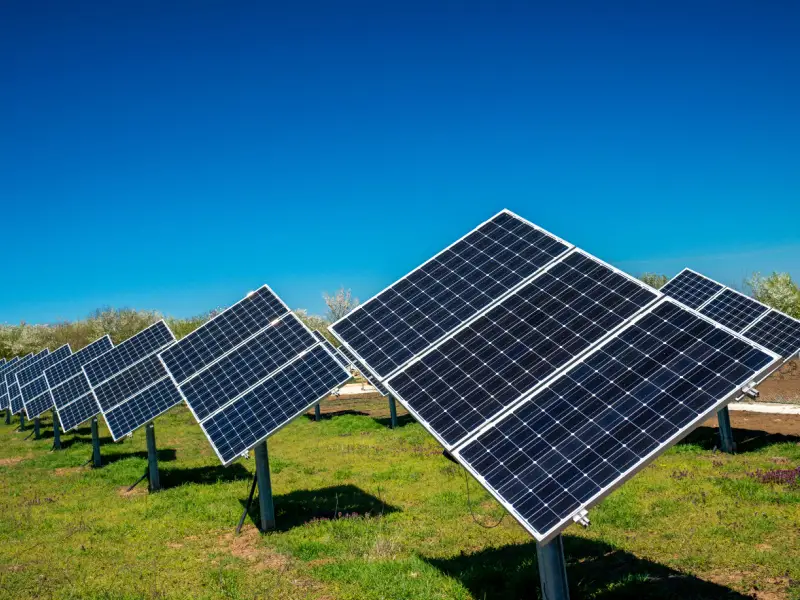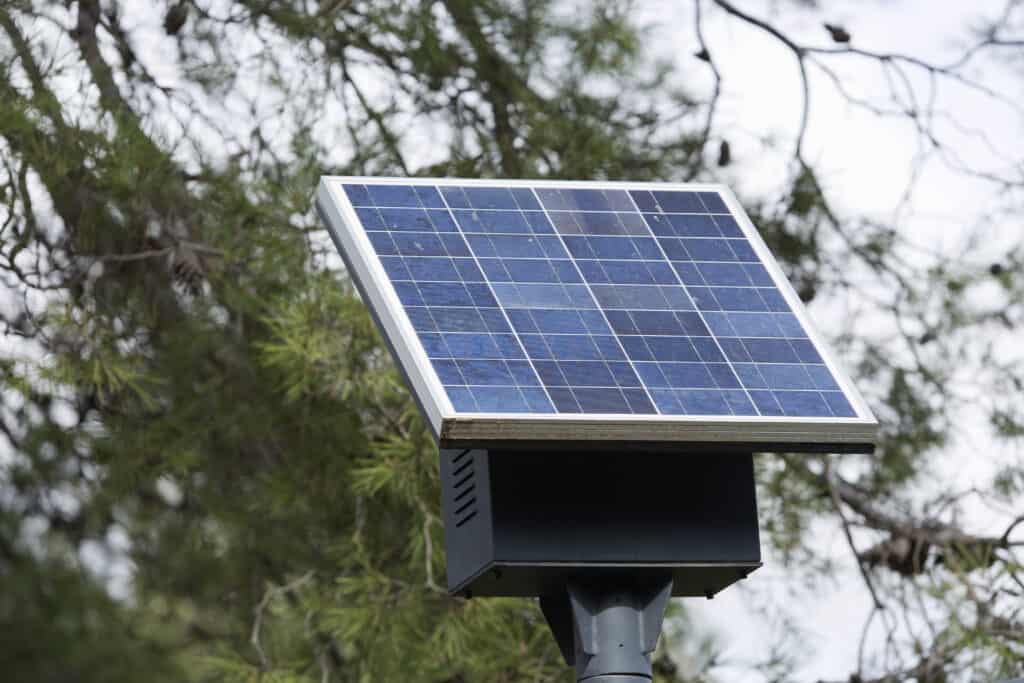

Navigating the energy landscape of the 21st century calls for sustainable, self-reliant, and innovative measures. The concept of an off-grid energy system, once a remote idea, has now become an accessible and feasible solution for many households and organizations seeking independence from traditional power grids.
Building Your Off-Grid Energy System involves sourcing renewable energy from solar panels, wind turbines, or hydroelectric generators. Storage batteries retain excess power during low production periods, ensuring a consistent energy supply independent of the grid.
This resource aims to provide a comprehensive understanding of various off-grid energy systems, including but not limited to solar, wind, and hydroelectric power generation. Furthermore, it will introduce essential components for achieving a self-sufficient power supply, such as a charge controller, batteries, and inverters. It moves beyond theory, offering practical guidance on assessing your location’s potential for harnessing renewable energy and calculating your power needs leading to a uniquely tailored power system.

Understanding Off-Grid Energy Systems
Off-grid or standalone energy systems are designed to function independently without connecting to the primary power grid. They are often used in remote locations, areas prone to frequent power outages, or for people prioritizing energy independence and sustainability. Renewable energy sources, such as solar panels (photovoltaic), wind turbines, and hydroelectric power generators, are central to these systems.
Before going entirely off the grid in 2020, I researched the available options. Hopefully, this article will help save you some time on your journey.
Photovoltaic Power Generation

Photovoltaic power generation relies on solar panels made from solar cells containing a semiconductor material such as silicon. When sunlight strikes the solar panels, it excites electrons in the semiconductor, initiating a flow of electric current. This direct current (DC) is converted into alternating current (AC), which can power household appliances.
After my research, I chose solar for my off-grid energy system. Here are the solar panels I use on my 5-acre off-grid homestead: Renogy 320W Solar Panels from Amazon.
Wind Power Generation

Wind power generates electricity through wind turbines. These towering structures have blades that rotate when pushed by the wind. This rotation drives a generator inside the turbine, which converts the mechanical energy of the spinning blades into electrical energy. The amount of power generated depends on the speed and consistency of the wind.
Hydroelectric Power Generation
Hydroelectric power is generated by harnessing the power of flowing or falling water. Water flows over or through a turbine, causing it to spin, and the energy of this motion is transferred to a generator that creates electricity. As with wind power, the amount of power generated here depends on the speed and volume of the water.
This can be a great option if running water from a river or stream is available on your property.
Storage And Conversion Components: Charge Controller And Batteries

A charge controller is a critical component in off-grid energy systems. It regulates the voltage and current from the solar panels or wind turbines to the batteries, protecting them from overcharging. Overcharging can cause damage or frequent replacement of batteries, making this component essential for system longevity.
Here is the exact charge controller I use on my 5-acre off-grid homestead: Rover 100A Charge Controller from Amazon.

Battery banks store surplus power generated during peak production periods, storing energy when needed. Deep-cycle batteries are commonly used in off-grid power systems because they can be repeatedly discharged and recharged.
I went with the Renogy Deep Cycle AGM from Amazon. I have 3 of them making up my battery bank for a total of 600Ah.
Power Conversion: The Role Of An Inverter

Finally, an inverter plays a crucial role in changing the direct current (DC) collected from the renewable energy source into an alternating current (AC). AC is the standard for all commercial appliances, so we convert solar energy (DC) into a usable form (AC). An inverter can also regulate the power output to match the demand, ensuring that your off-grid system delivers a steady, compatible electricity supply.
I use the Renogy 3000W Pure Sine Wave inverter found here on Amazon.
Understanding these basic principles of off-grid power systems, from generation to conversion and storage, is the first step in building a functional and efficient stand-alone power source.


Site Assessment And Power Requirement Evaluation
Evaluating Your Site For Energy Potential
The first step in building an off-grid energy system is assessing your site’s potential for using renewable energy sources such as solar, wind, or hydro energy. First, for solar power, examine the site for its solar exposure by considering whether there are any obstructions, like trees or other buildings, causing shade. Using tools such as a solar pathfinder can help you understand the annual solar path and the impact of surrounding obstructions.
If you don’t have access to a solar pathfinder, you can spend some time on the land. Watch the site throughout the day and year (if possible) before determining your site’s energy potential.
Evaluating the wind speed and direction at your site is necessary for wind energy. A wind speed of at least 10 miles per hour is typically required to make wind power feasible. Wind speed maps or anemometers can help determine whether your site has a consistent wind flow.
Lastly, hydroenergy requires a flowing water source. The energy potential here mainly depends on the flow rate and the height of the water drop (known as ‘head’). Flow meters can gauge the volume and speed of the water available.
Calculating Your Energy Needs
Next, it’s essential to calculate your energy needs by evaluating your power consumption. Start by inventorying all your electrical appliances and devices and calculating their total energy consumption, which is usually measured in kilowatt-hours (kWh).
Look at each device’s power rating, normally indicated on the device or in its manual, and multiply this power rating by the number of hours you use the device daily. This gives you the amount of energy the device consumes in a day.
To calculate your total power consumption, add the daily energy consumption of all devices. Be sure to consider seasonal differences—energy consumption may be higher during summer or winter due to heating or cooling needs.
Designing Your Off-Grid System
After assessing your site potential and energy needs, you can design a system tailored to your requirements. Most off-grid systems include the energy source (solar, wind, or hydro), a charge controller, a battery bank for storage, and an inverter to change the power from DC (direct current) produced by your energy source to AC (alternating current), which most home devices can use.
The size and type of each component depend highly on your site’s renewable energy potential and power needs. For instance, if your site has high solar potential and energy needs are high during the day, a larger solar panel array might be beneficial. Similarly, a wind turbine would be essential if your site has a consistent wind flow and your energy needs are spread evenly throughout the day and night.
If you decide to go with solar, Renogy has several premade kits for specific for different solar needs. I am not affiliated with Renogy in any way; I just use their product.
By correctly evaluating your site’s potential and understanding your energy needs, you can design an off-grid energy system that suits your needs and helps you become more energy-independent.

Designing Your Off-Grid Energy System
Understanding Off-Grid Energy Systems
An off-grid energy system is a power system designed to generate electricity and is not connected to the public utility grid. It is often designed to supply electricity to houses, boats, or entire communities. Off-grid systems can use various components, such as solar panels, wind turbines, hydropower systems, inverters, and batteries.
Different Types Of Solar Panels
There are three main types of solar panels: monocrystalline, Polycrystalline, and thin film. Monocrystalline solar panels are usually black and offer the highest efficiency and space-saving benefits. However, they are more expensive. Polycrystalline solar panels are slightly less efficient, require more space, and are less expensive. Thin-film solar panels offer the lowest efficiency and take up the most space, but they are the cheapest option.
Wind Turbines For Energy Production
Wind turbines work by converting the wind’s kinetic energy into mechanical energy and then into electricity. The wind turns the blades, which spin a shaft connected to a generator that produces electricity. If you live in an area with adequate wind speeds, wind turbines can be a great off-grid solution. However, they require significant space and may be subject to local ordinances and regulations.
Hydro Systems: Harnessing Water Power
If your property contains a water source with a sufficient fall or flow, a small-scale hydro system could be a viable option. Hydro systems use water flow to spin a turbine connected to a generator, transforming mechanical energy into electrical energy. These systems can produce a consistent flow of energy, unlike solar and wind, which are variable.
Choosing The Right Batteries For Your System
Batteries store the energy produced by your off-grid system for future use. The three primary types of batteries suitable for off-grid systems are lead-acid, lithium-ion, and saltwater batteries. Lead-acid batteries are often the cheapest option, but they require regular maintenance and must be replaced more often. Lithium-ion batteries provide a lower lifetime cost, higher storage capacity, and require less maintenance. Saltwater batteries are a newer type of battery that uses saltwater as their electrolyte and are touted as a more environmentally friendly option.
If I could have afforded Lithium-ion batteries, that is what I would have gone with, but I wasn’t able to make that investment.
Which Type Of Inverter To Use
Inverters convert the direct current (DC) electricity generated by renewable energy sources into alternating current (AC) that can be used by appliances or other electrical devices. There are two types of inverters on the market: modified sine wave and pure sine wave inverters. Pure sine wave inverters are generally more expensive, but they can provide power to sensitive electronics without damaging them. However, if your power requirements include basic lighting and some electric tools, then modified sine wave inverters can be a cheaper alternative.
Designing Your Own Off-Grid Energy System
When designing your off-grid energy system, consider your power requirements. Estimate the power consumption of each appliance and how often you use it to determine the total watt-hours you will need in a day. This will guide you in selecting the type and quantity of energy sources, batteries, and inverters you need. Always opt for a system that can generate 1.5 times more than your total energy consumption to cater to cloudy or windless days and unforeseen power needs. Your chosen system must be compatible with your location and individual requirements. It’s advisable to have a mix of energy sources to ensure reliable power year-round.

Setting Up And Maintaining Your Off-Grid System
Understanding Off-Grid Energy System Components
Building an off-grid energy system begins with understanding its core elements, which mainly include solar panels, a charge controller, batteries, and an inverter. Solar panels capture sunlight and convert it into electricity. The charge controller manages the power going into the battery bank. Batteries store electricity when needed, and the inverter converts this stored power into the type and voltage of electricity you can use in your home.
Installation And Wiring Process
The first step in installation is mounting the solar panels. Choose a location with maximum sunlight throughout the day, typically a south-facing roof or ground mount. Secure the panels using mounting hardware, ensuring they’re inclined at an angle equal to your latitude for optimal sunlight reception.
Next, you’ll need to install the charge controller. The location for this component should be near the battery bank but not too close to avoid overheating. Ensure you follow the manufacturer’s instructions to wire the solar panels to the charge controller.
From now on, connect the charge controller to the battery bank. These batteries should be in a well-ventilated and easily accessible area. Be mindful of the different types of batteries, as certain types, like lithium-ion, require special handling.
Finally, connect your battery bank to the inverter. The inverter should be near your main electrical panel, allowing it to be integrated more easily into your home’s electrical system.
Always remember to follow safety precautions while performing these tasks. Ensure all components are off and/or disconnected from the power source while wiring, and refrain from touching the solar panel’s front, as it can produce electricity in light.
Routine Maintenance And Troubleshooting
Regular checks and maintenance are essential to maintaining an efficient off-grid system. Solar panels need to be kept clean, and loose connections in the wiring should be inspected periodically. Batteries are notably a component that requires careful upkeep. Refrain from depleting them completely, and ensure they’re fully recharged whenever possible.
Troubleshooting issues mostly involves identifying the afflicted component and addressing the specific problem. For instance, if the batteries are not holding a charge, it could be an aging battery, an improper configuration, or an issue with the charge controller. Regularly monitoring system performance can help you nip issues in the bud before they escalate.
Adopting Professional Assistance
Despite the DIY approach being plausible, professional assistance is recommended, especially when it comes to electrical wiring, for safety reasons. To avoid potential hazards, reach out to a qualified electrician to handle the inverter’s tying-in to your home’s electrical panel. Moreover, businesses specializing in off-grid, renewable energy systems can provide insightful consultation and support.

As we pivot to more sustainable ways of life, off-grid energy systems offer an attractive pathway for individuals and communities to reduce their carbon footprint and gain energy security. The journey to becoming energy-independent might seem steep, yet with the necessary knowledge and resources, it is possible to design, install, and maintain your system.
This guide is designed to empower you with the tools you need to embark on this transformative journey, from understanding the basics to comprehending the complexities of particular system components, proper site assessment, power consumption evaluation, and regular system maintenance. Remember, every step you take towards a sustainable off-grid system contributes to a more sustainable future for our planet.
I hope this post brought value to your day. Please consider sharing it with a friend or on your favorite social media if it did. Thanks For Reading The Dying Art Of Living!

